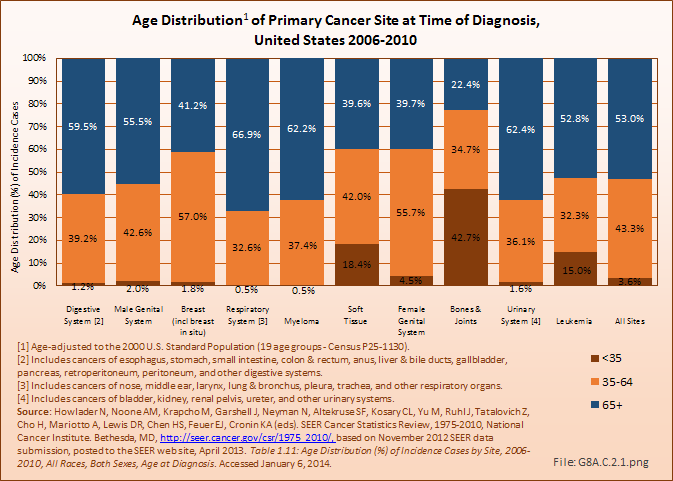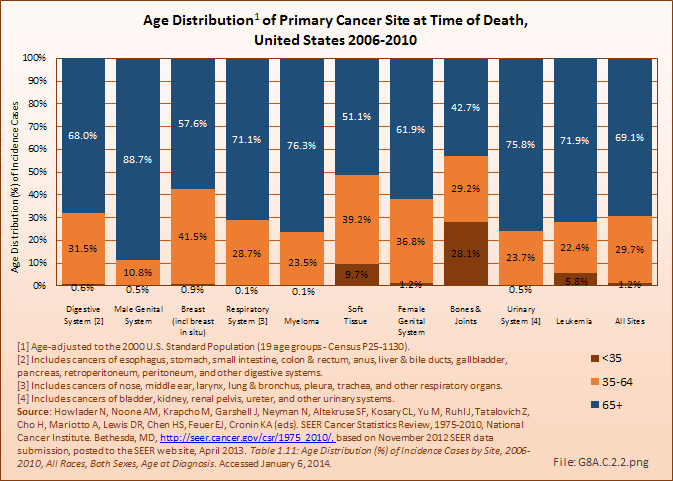

More than 60% of myeloma cases are diagnosed in persons age 65 years and older. This is a similar rate to respiratory and urinary system cancers, both of which disproportionately affect older persons. Soft tissue cancers affect all ages, and in relatively equal proportion in the middle years (ages 35 to 64 years) and older population (65 years and older). As previously discussed, bone and joint cancers affect a disproportionate number of younger persons, and are not considered a major cancer of aging. (Reference Table 8A.3.2 PDF [1] CSV [2])

Because of the advanced age of many myeloma patients, and the average survival rate of 6 years following diagnosis coupled with a less than 50% 5-year survival rate, 76% of deaths from myeloma occur to the 65 and older population. Soft tissue cancer deaths occur about equally in people under 65 years and those 65 years and older. Deaths from bone and joint cancers have a lower rate in the 65-year and older population than nearly all other cancers, primarily due to the higher rate of death in those under 35 years of age.(Reference Table 8A.3.4 PDF [3] CSV [4])

The average age of the population in the United States continues to rise. With age, the human body’s ability to cope with stress and illness declines. As a result, poorer outcomes from cancers are expected in the aged due to greater decline in functional status, adaptability and an increase in co-morbid conditions, all of which have been shown to have an effect on survival.
Links:
[1] https://bmus.latticegroup.com/docs/T8A.3.2.pdf
[2] https://bmus.latticegroup.com/docs/T8A.3.2.csv
[3] https://bmus.latticegroup.com/docs/T8A.3.4.pdf
[4] https://bmus.latticegroup.com/docs/T8A.3.4.csv